The Short Answer is 'Yes' if you have the time and drive...
You can do it without hiring a remediation crew - but there are as many 'cons' as 'pros' when weighing the task of taking on an entire house deodorization. Whether you're moving into a home with a lingering smell, battling pet and smoke odors, or trying to freshen up a damp basement, SynergyGreenClean.com, with our Envirotab & OdorPros brand products, has made it easier than ever to eliminate—not mask—serious odors at the source.
Using a strategic combo of Envirotab tablets and OdorPros gels & granules, you can detox your space safely, effectively, and affordably. Let’s break down the process.
Understanding the Root of Household Odors
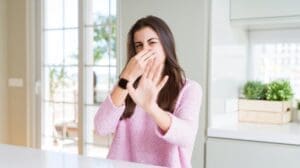
Most household smells aren't just "in the air"—they’re embedded in surfaces, fabrics, HVAC systems, and porous materials. That means a plug-in or scented spray won’t fix the issue. Real odor control requires deep penetration, surface contact, and air treatment. This is something that even ozone can't accomplish as well as ClO2 can. Chlorine Dioxide dismantles both organic and inorganic odor-causing molecules, and has 250% more capacity to oxidize the bacteria that causes odors than does bleach, ozone or peroxide.
Chlorine Dioxide (ClO₂) comes in—an ultra-effective, residue-free molecule that oxidizes odor compounds and pathogens alike. Synergy’s solutions and other ClO2 product forms give homeowners the tools professional restoration teams have relied on for years.
Step-by-Step: How to Eliminate Odors Like a Pro Using Synergy Products
Step 1: Know Your Battle Zones - Mark them out and be sure to have the right strategy for each type of space, surface and odor type.
Odors can collect in:
- Carpets and upholstery
- HVAC vents and filters
- Walls, ceilings, and insulation
- Basements, garages, attics
- Pet areas and laundry rooms
Make a list of rooms or zones you want to treat and evaluate how severe the odor is. Musty? Smoky? Sour? The stronger or more stubborn the smell, the more important it is to treat air and surfaces.
You will also need to know where the odor is coming from, is it on the surface? below the surface? deep into the substrates like wood and concrete? The deeper the odor goes the faster you will know if you can actually do the work yourself or will need to call in a professional.
Step 2: Begin with the Surfaces - Cleaning with ClO₂ by Envirotab
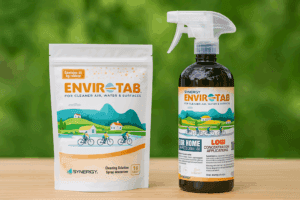 Envirotab is the ideal DIY tool for multi-room deodorizing.
Envirotab is the ideal DIY tool for multi-room deodorizing.
- Use (1) 1g tablet per 32oz bottle for general spray-and-wipe applications (walls, floors, upholstery).
- For heavy, built-up surface soil, use our 4g tablets in 64oz of water, dissolved and mixed as directed with Synergy Soil Break. Consider using a pump foamer-sprayer to saturate air and porous materials.
- Be sure to remove ALL register covers, in your HVAC ducts (both hot air and cold air return ducts), and visually inspect to see how far down the soil-load goes into the system.
- Then, finally, wipe down EVERY washable surface with ClO₂ solution and a microfiber cloth.
Because ClO₂ leaves no toxic residue, it’s safe for use on furniture, mattresses, appliances, walls, and more.
Step 3: OdorPros Granules & Gel Packs for High-Impact Air Treatment
Once the surface cleaning is done, you can then tackle the odors in the air. This will especially be the case where smoke, mold, pet, or mystery odors are embedded deep in walls and flooring, consider using an OdorPros Pro Kit. These kits are designed to generate a low-dose but high-purity ClO₂ gas, which permeates entire spaces. Please Note: This will not happen with any of the speed as delivered by our OdorPros affiliates and may take days or even weeks to accomplish what they can deodorize in a day.
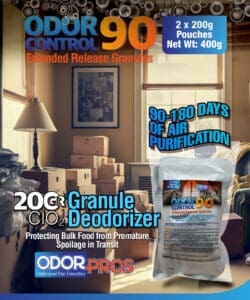 But if you want to go it alone, here is what you can do:
But if you want to go it alone, here is what you can do:
- Start with our OP-OC90 2 x 200g Deodorizing Packs, this is the largest and most powerful kit we will sell to non-professionals.
- Make use of your cold-air returns and hot air ductwork in your HVAC System to do your vapor distribution. Take the total square footage of your home and divide it by 300, this is how many packages you will want to purchase.
- Spread these out so that you have a paper plate and a OP-OC90 Pouch at every cold-air return, remove the register covers, place the paper plate on the bottom of the duct (against the galvanized metal) and open the foil pouch to remove the Tyvek vented granule pouch within. Please wear gloves. Remove the pouch and set it on the paper plate and replace the register cover. This pouch can stay there for the next 60-90 days.
- If you don't have enough ducts for the number of pouches your house will require, then supplement with fans on the floor to which you can clip the Tyvek pouch to the cage in front of the fan. Set the fan on low speed.
- At your HVAC unit, turn on the fan blower (no heat, no A/C) to circulate air through the system. This will pull air across the pouches releasing vapor that will cleanse the air in the HVAC system and then take on the odors spread around your house.
This method mimics what commercial odor remediation pros do—but please understand that it will not work as quickly as our OdorPros.
Step 4: Maintain the Clean with Light Applications
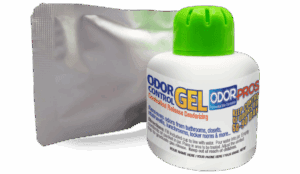
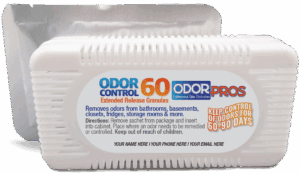
Once the deep treatment is done, continue using Envirotab solution in daily or weekly wipe-downs, and place a scattering of OdorPros gels and granule kits around your house. Spray or mist pet beds, gym shoes, closets, and trash bins to keep odors from returning. Place Gel Kits, OP-OC30 or OP-OC60 Kits in areas where odors are known to develop. You’ll be amazed how much fresher your home stays over time.
Why This Works: The Power of ClO₂
Unlike traditional cleaners or deodorizing sprays that mask odors, ClO₂ chemically dismantles the odor-causing molecules themselves. Whether it's urine, mildew, smoke, or decomposition—ClO₂ neutralizes it at the molecular level.
And unlike bleach or QACs, there’s no harmful residue or fumes left behind.
Pro Results, DIY Simplicity
With Envirotab for surfaces and maintenance and OdorPros for shock treatment, you have everything you need to reset your indoor environment. It’s the safest, most effective way to make a home truly livable again—especially after a long-term odor problem.





